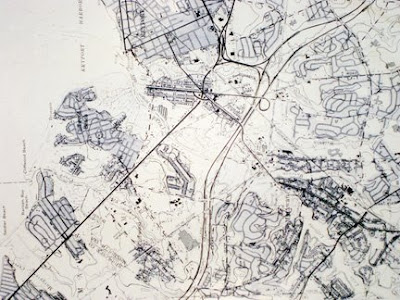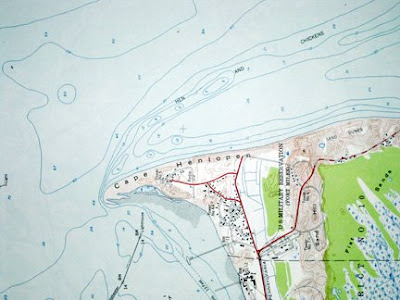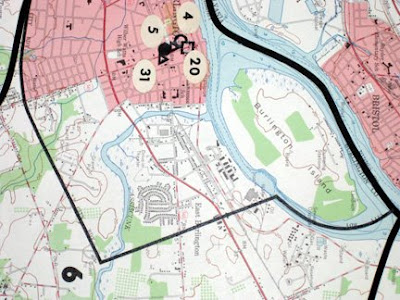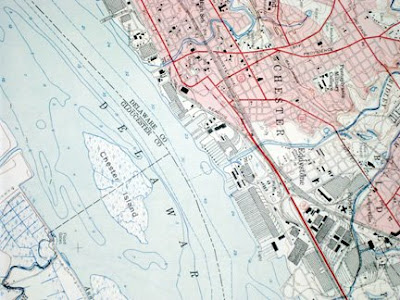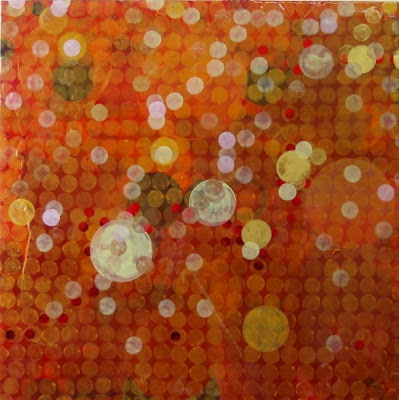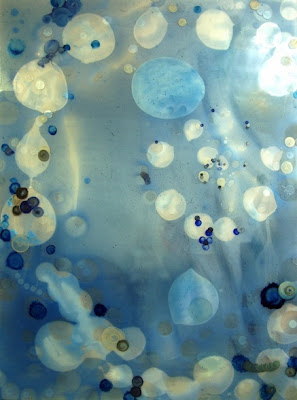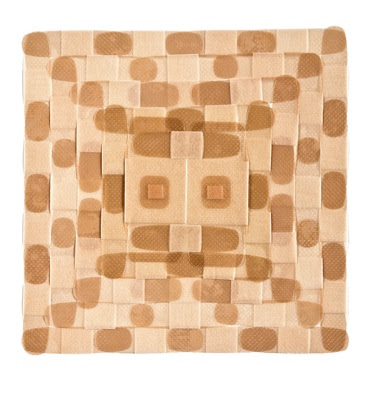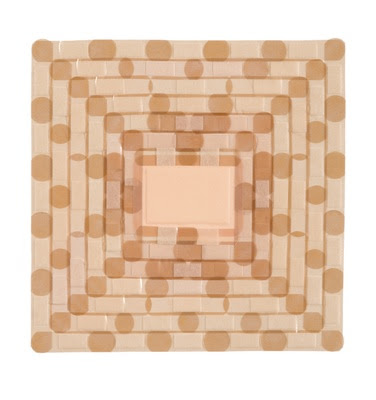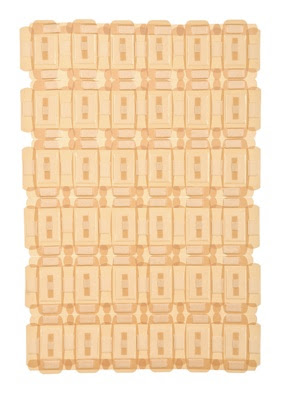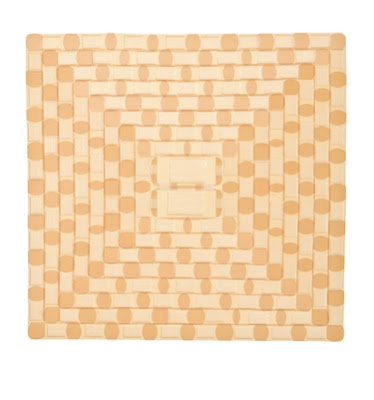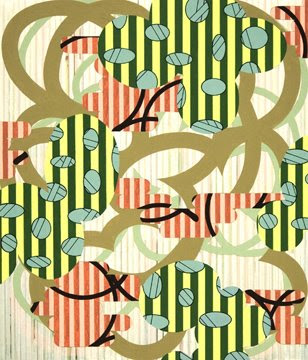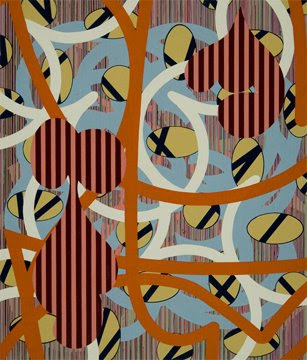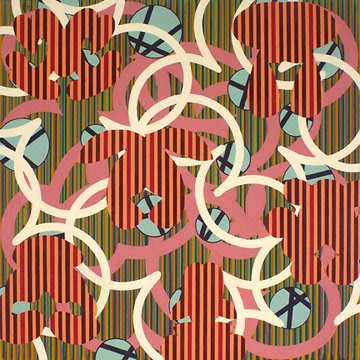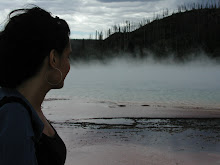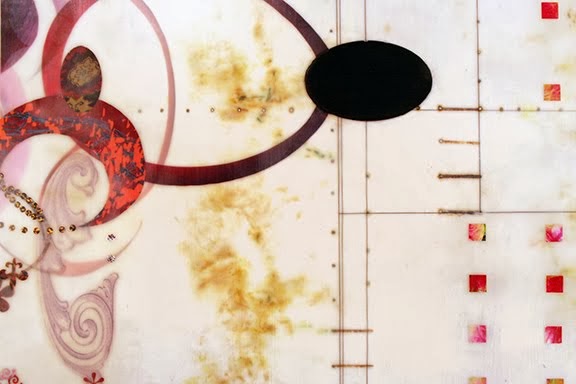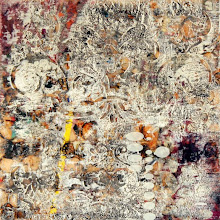
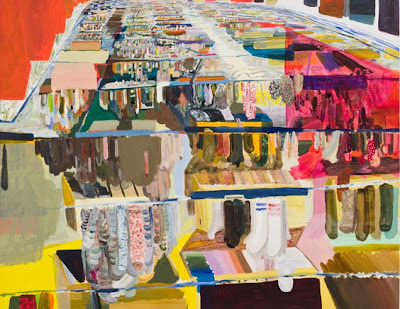
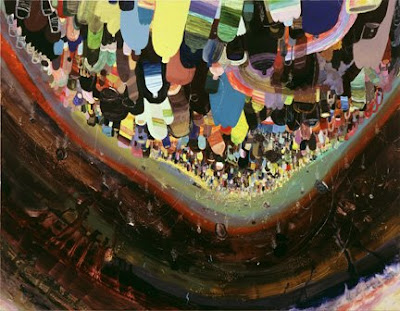
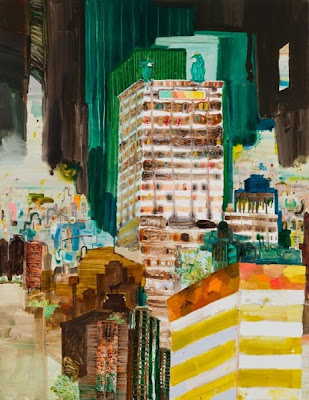



Christmas for Export, 2007, acrylic on linen, 67 X 86 5/8, The World's Largest Sock Market, 2008, acrylic on linen, 67 X 86 5/8, Pearl Farm Underwater II, 2007, acrylic with pearl on canvas, 70 X 90 X 3/4, Tang Factory I, 2007-2008, acrylic on linen, 86 1/2 X 66 7/8, Oil Painting Village, 2008, acrylic on linen, 86 5/8 X 67, The Road to Decoration City, 2008, acrylic on linen, 67 X 86 5/8, Wooden Toy Town, 2008, acrylic on linen, 67 X 86 5/8
The paintings are constructed as organically and irrationally as the landscapes themselves. Within the painting space, the paintings are amok with different gestural styles, as abstract and realistic forms erupt onto the canvas. The paint-handling and the imagery is at times very descriptive of the places I observe, while at other times it is loose, layered, careless and more abstract, hoping to recall the memory of previous uses of the land. The densely painted surfaces and wide-open spaces on the canvas try to convey both a sense of hope and emptiness, a feeling both critical and celebratory of the American landscape.read the complete statement here and see more work here and here.

